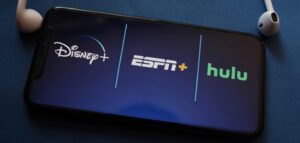Digital is still growing faster than any other advertising medium in the United States, but the segment is starting to show signs of maturing.
US digital advertising revenues grew 17% YoY in the first half of 2019, reaching $58 billion, according to the IAB’s internet advertising revenue report, released Monday. While that’s the highest first-half revenue total recorded since the IAB began measuring digital ad revenues in 1997, underlying trends indicate the sector is growing up.
The IAB conducts the report with PricewaterhouseCoopers, which compiles a database of revenues from digital publishers, exchanges, ad networks, email providers and other online media companies.
Compared to H1 2018’s growth rate of 23%, 2019 was the first year that revenue growth in the first half did not surpass the prior year. Both Q1 and Q2 of 2019 experienced the lowest quarterly growth rates since 2015, at 16.7% to $29 billion and 17% to $30 billion, respectively.
“The growth rate, while still super impressive and leading pretty much any other industry, is beginning to show some signs of slowing down,” David Silverman, a partner at PwC who oversaw the report, said Monday during a webcast presentation of the findings.
As social media platforms mature – social expanded 26% in the first half of 2019 to $16.5 billion – it’s becoming harder for platforms to maintain their historical growth rates. The Top 10 companies concentrate 76% of digital ad revenues, according to the IAB, so a slowdown in their growth affects the entire industry.
“There is still a lot of growth to be had from many of those companies, but they’re maturing as they become a more critical part of the economy,” said Brian Wieser, head of global intelligence at GroupM.
Mobile advertising, which increased 29% in the first half of the year to $20 billion, continues to drive growth in digital ad revenues as advertisers catch up with consumer habits. “There was a lag period in the early years, and that gap is closing,” Silverman said.
But as smart phone penetration peaks in the United States, digital advertising revenue growth on mobile is starting to slow too. Mobile ad revenues rose at a consistent 47% for the past five years, Silverman said.
Desktop ad revenues, meanwhile, continue to shrink as the industry experiences a “complete reversal of share of dollars” with mobile, Silverman said. When the IAB began measuring mobile in 2013, it accounted for 14% of digital revenues compared to desktop’s 86% share. Today, mobile accounts for 69% of digital ad revenues while desktop makes up 31%.
AdExchanger Daily
Get our editors’ roundup delivered to your inbox every weekday.
Daily Roundup
But mobile’s penetration is expected to level off soon at around 71%, Silverman said.
“It’s really seeing the market hit its penetration,” he said. “Ad dollars have caught up with time spent, so growth needs to come with a further shift in time spent or further penetration. These are indicating factors that slowdown is likely.”
Better measurement
Digital video continues to drive overall digital ad investment from a format standpoint, increasing 36% YoY to $9.5 billion. But as video continues to fragment across screens and devices, advertisers are clamoring for a more holistic view of their spend.
Part of that fragmentation is due to a lack of maturity in the space. The IAB couldn’t break out revenues for over-the-top TV advertising, for example, because publishers aren’t willing to share those numbers yet.
“Today it’s a patchwork, and that is a point of friction,” said Eric John, deputy director of video at the IAB.
Advertisers are particularly frustrated by the lack of apples-to-apples measurement across linear TV and digital video. While many advertisers are trying to get to one-to-one personalization on digital, they’re still relying on Nielsen to measure households for linear TV.
“There are two trains that run side by side, one focused on household and one on individuals,” John said. “How do you plan for and manage one-to-one on those two different bases?”














